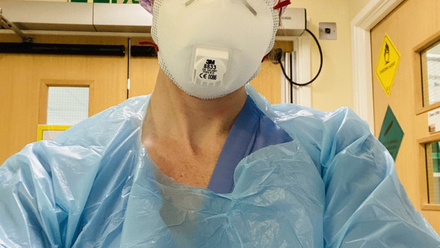Introduction
Energy Contribution
In patients who are critically ill, overfeeding can lead to the exacerbation of hypercapnia, hyperglycaemia, hypertriglyceridemia, fatty liver, uraemia and metabolic acidosis. The risk of adverse complications is likely to be the highest during the initial phase of critical illness (Casaer et al. 2011).
Inevitably acute peritoneal dialysis is likely to provide a source of energy in the form of glucose. See Table 1.
Table 1. PD Solution details
|
Manufacturer |
Brand |
Glucose Content |
Estimated Kcal/L (see notes for % absorbed during dwell in acute PD) |
|
Baxter |
Dianeal 1.36% |
13.6 g/L |
54 |
|
Baxter |
Dianeal 2.27% |
22.7 g/L |
91 |
|
Baxter |
Dianeal 3.86% |
38.6 g/L |
154 |
|
Baxter |
Physioneal 1.36% |
13.6 g/L |
54 |
|
Baxter |
Physioneal 2.27% |
22.7 g/L |
91 |
|
Baxter |
Physioneal 3.86% |
38.6 g/L |
154 |
|
Baxter |
Nutrineal |
Zero (1.1% protein as osmotic agent) |
0 |
|
Baxter |
Extraneal (Icodextrin 7.5%) |
0 g/l Glucose (75g/L Icodextrin) |
0 glucose – see notes above regarding potential calorie contribution from plasma metabolism of absorbed oligosacharrides. |
|
Fresenius Medical Care |
Balance 1.5% (high and low Ca range) |
15g/L |
61 |
|
Fresenius Medical Care |
Balance 2.3% (high and low Ca range) |
22.73g/L |
90.8 |
|
Fresenius Medical Care |
Balance 4.5% (high and low Ca range) |
42.5g/L |
170 |
The Renal Nutrition Group (RNG) and the Critical Care Specialist Group (CCSG) of the British Dietetic Association (BDA) were asked to provide a guide of how to quantify the energy contribution from acute PD.
There is limited evidence to support a definitive recommendation of how to estimate the amount of glucose absorbed during this treatment. Therefore this document has been developed using evidence for the nutritional management of acute PD (Goes et al. 2013; Podel et al. 2000), critical illness (Singer 2019) and expert opinions.
The amount of glucose absorbed is depended on the time available for absorption, the volume instilled and the concentration of the glucose of bagged dialysate solution. See Table 2 (Heimburger et al. 1992). In patients on CAPD, the glucose absorption from the dialysate may be estimated if the glucose concentration in the drained 24 hours dialysate is measured (Dombros et al, 2000). For example a 2 hour, 2L dwell, of a 2.27% solution may contribute 64 – 100 kcals of glucose. However this may be impractical in the acute setting.
Table 2. Dwell time and estimated glucose absorbed (adapted from Heimburger et al. 1992).
|
Dwell time in minutes (hours) |
Approximate amount of glucose absorbed % of initial intraperitoneal amount |
|
30 (1/2) |
15 – 25 |
|
60 (1) |
25 – 40 |
|
120 (2) |
35 – 55 |
|
180 (3) |
45 – 65 |
|
240 (4) |
50 – 70 |
|
360 (6) |
60 – 80 |
In the acute setting, Podel et al (2000) attempted to measure the amount of glucose absorbed in 9 patients treated in critical care with acute PD. They recommended using a pragmatic approach and suggested based on their work that 40%- 50% of glucose provided by the PD regime would to be absorbed during acute PD (Podel et al. 2000). It is important to note that this study was based on 9 patients.
Goes and colleagues (2013) evaluated the metabolic implication of glucose absorption, protein losses and catabolism in a prospective cohort study over 18 months. They evaluated 208 sessions of high volume PD performed in 31 patients with AKI and estimated glucose absorption at 35% +/- 10.5% per session (Goes et al. 2013).
Another consideration is the inflammatory response. Although glucose absorption does not appear to be impacted by systemic inflammation, this has not been studied extensively in the critical care setting (Cho et al, 2010). The clinical condition of the patient, the cause of AKI, inflammation and co- morbidities, are factors that should be taken into account during the formulation of nutritional prescription to avoid metabolic complications such as overfeeding (Goes et al 2013).
Use of Icodextrin
Icodextrin is a starch derived glucose polymer used as an alternative osmatic agent to glucose in PD. Itis absorbed from the peritoneum via the lymphatic system in very low quantities (20-40%), even over a long dwell times (8-12 hours). It is metabolised by circulating amylase into oligosaccharides and maltose. The exact calorie contribution from absorbed icodextrin has not been determined. Limited evidence based on pharmacokinetic studies (and not in patients who are critically ill), suggests a maximum calorie contribution of approximately 150kcal for an 8-hour dwell time (Gokal, 2002) and that absorption of icodextrin is less than 10% in dwells time less than 2 hours (Olszowska, 2019). As maltose can only be converted to glucose in the renal tubules and the subsequent glucose resorption will be impaired in AKI, we would suggest using a pragmatic approach and considering calorie contribution from Icodexitn negligible.
Protein loss requirements
The loss of protein during PD is low (Yoowannakul et al, 2018) and is likely to be even lower in acute short dwells time. However, protein requirements are likely to be affected by the degree of the inflammatory response, as well as patients underlying clinical condition (William et al. 2017; Todorovic and Mafrici 2018). Goes et al. (2013) showed that high PD volume did not increase hypermetabolism and protein losses in patients with AKI treated with acute PD (Goes et al 2013).
Recommendations
The RNG and CCSG of the BDA would recommend:
- Consider the following factors that will affect glucose absorption: dwell time, dialysate glucose concentration, how long the acute PD is needed for and presence of insulin resistance during the inflammatory response.
- In view of the limited evidence, it is very difficult to estimate the amount of glucose absorbed, therefore we would suggest using a cautionary approach:
- Estimate 35% (or using a range 25-45%) of glucose provided to be absorbed, but this is based on very limited evidence and may be not applicable to all patients. Exclude calories from Icodextrinas these are negligible.
- Monitor the patient clinical condition, blood glucose levels and nutritional status closely. Adjustments to the nutrition plan should be made for non-nutritional calories e.g. propofol and glucose from PD, as per usual practice to avoid overfeeding.
- Patients with diabetes will need closer monitoring of their blood glucose levels as well as individualisation of their insulin regimen, to take into account both PD and the nutritional regimen.
- Energy and protein targets should be set as per local AKI and critical care practice. We recommend using the guidance in “Think Kidney 2017” (Williams et al. 2017), ESPEN 2019, and the Kidney and Critical Care sections of the Pocket Guide to Clinical Nutrition 2018 (Todorovic and Mafrici 2018).
- Consider a goal of 1.3g protein kg/body weight (with adjustment for extreme of body mass index) delivered progressively over the first few days of critical illness. Protein supplementation/ high protein formulas may need to be considered in patients who are unable to meet protein targets due to the significant contribution of non-nutritional calories.
- For those patients on the intensive care unit (ICU) with COVID 19, refer to guidance developed by the CCSG (BDA CCGS 2020).
References
- BDA CCSG 2020. Guidance on the management of nutrition and dietetic services during the COVID-19 pandemic 2020. Online resource [accessed on the 12th May 2020] https://www.bda.uk.com/practice-and-education/covid-19-coronavirus-clinical-guidance.html?topic=46ADE289-4820-4937-8B7DBF8EC306D310&sortBy=date
- Casaer, M.P., Mesotten, D., Hermans, G., Wouters, P.J., Schetz, M., Meyfroidt, G., Van Cromphaut, S., Ingels, C., Meersseman, P., Muller, J. and Vlasselaers, D., 2011. Early versus late parenteral nutrition in critically ill adults. New England Journal of Medicine, 365(6), pp.506-517.
- Cho J, Hur I, Kim C, et al. Impact of systemic and local peritoneal inflammation on peritoneal solute transport rate in new peritoneal dialysis patients: a 1-year prospective study. Nephrol Dial Transplant 2010:25:1964-1973.
- De Santo NG, Capodicasa G, Senatore R, Cicchetti, T, Cirillo D, Damiano M, et al. Glucose utilization from dialysate in patients on continuous ambulatory peritoneal dialysis (CAPD). Int J Artif Organs. 1979 May; 2(3): 119–24.
- Dombros N, Dratwa M, Feriani M, Gokal R, Heimburger O, Krediet R, et al. European best practice guidelines for peritoneal dialysis. 3 Peritoneal access. Nephrology Dialysis Transplantation 2005;20 Suppl 9:ix8‐ix12.Grodstein et al, Kidney International 1982:19:564-567.
- Goes CR, Berbel MN, Balbi AL and Ponce D. Metabolic implication of Peritoneal Dialysis in patients with Acute kidney injury. Peritoneal Dialysis International 2013 (33): 635-645.
- Gokal R, Moberly J, Lindholm B, Mujais S. Metabolic and laboratory effects of icodextrin. Kidney International 2002 (62):Supplement 81: S62-S71
- Heimbürger O, Waniewski J, Werynski A, Lindholm B. A quantitative description of solute and fluid transport during peritoneal dialysis. Kidney Int. 1992 May; 41(5): 1320–32.
- Khan SF, Ronco C, Rosner MH. Counteracting the Metabolic Effects of Glucose Load in Peritoneal Dialysis Patients; an Exercise-Based Approach Blood Purif 2019;48:25–31.
- NHS England and NHS Improvement. Clinical guide for renal replacement therapy options in critical care during the coronavirus pandemic 2020 [accessed on the 12th May 2020] https://www.england.nhs.uk/coronavirus/wp-content/uploads/sites/52/2020/04/C0298-speciality-guide-clinical-guide-for-renal-replacement-therapy-options-in-critical-care-v1.1.pdf
- Olszowska A, Waniewski J, Stachowska-Pietka J et al Long peritoneal dialysis dwelss with icodextrin: kinetics of tranperitoneal fluid and polygucose transport. From Physiol. 2019 Vol10 Article 1326
- Podel J, Hodelin-Wetzel R, Saha DC, Burns G. Glucose absorption in acute peritoneal dialysis. Journal of Renal Nutrition. 2000 Apr 1;10(2):93-7.
- William H., Mafrici B, Barrett, M.Think kidney Nutritional considerations in adult patients with acute kidney injury 2017 [accessed on the 12th May 2020 ] https://www.thinkkidneys.nhs.uk/aki/wp-content/uploads/sites/2/2017/12/Think-Kidneys-Nutrition-Guide-final.pdf
- Singer, P., Blaser, A.R., Berger, M.M., Alhazzani, W., Calder, P.C., Casaer, M.P., Hiesmayr, M., Mayer, K., Montejo, J.C., Pichard, C. and Preiser, J.C., 2019. ESPEN guideline on clinical nutrition in the intensive care unit. Clinical nutrition, 38(1), pp.48-79.
- Todorovic V and Mafrici B A Pocket Guide to Clinical Nutrition 2018 A publication by the British Dietetic Association
- Yoowannakul S, Harris L, Davenport A Peritoneal protein losses depend on more than just peritoneal dialysis modality and peritoneal membrane transported status. Therapeutic Apheresis and dialysis 2018 22(2):171-177.









